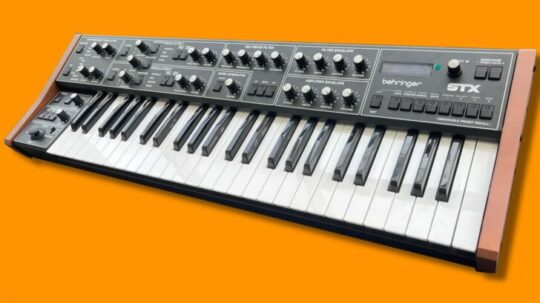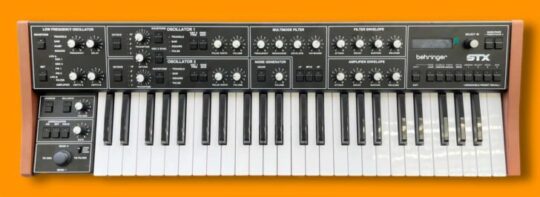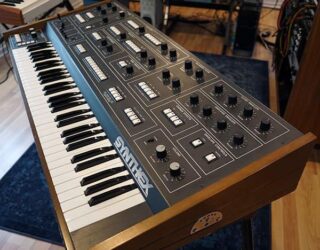Behringer Teases Elka Synthex Copy

Today, Behringer shared a preview of its upcoming copy of the Elka Synthex, an 8-voice DCO polysynth design from 1981.
The Behringer STX appears to be a fairly straight copy of the Synthex’s design, but reduced to fit into Behringer’s 4-octave Deepmind 12 form factor.
What the company say about it:

“The Elka Synthex, a synthesizer from the early 1980s, is cherished for its rich, warm sound and unique character. Musicians like Jean-Michel Jarre and Duran Duran have used it to create iconic tracks, solidifying its place in music history.
Designed by Mario Maggi and produced by the Italian company Elka, the Synthex has a storied past.
At Behringer, we’re working to revive the Elka Synthex with a dedicated team of top-notch R&D engineers in Italy, where the original was created. Using original DCO oscillators and advanced Field Programmable Gate Arrays (FPGAs), we’re able to replicate the original circuitry and signal paths, capturing the essence of its distinctive sound.
Our goal is to make the classic sound of the Elka Synthex available to today’s musicians, combining its vintage appeal with modern technology. This passion project aims to respect the legacy of the Synthex while providing the enhancements needed for contemporary use.”
Behringer hasn’t shared any official specs yet, but based on the images that they’ve shared, it looks like the key changes are the addition of MIDI, and shrinking the synth down to fit into one of Behringer’s standard formats, losing an octave off the keyboard in the process.

Details on pricing and availability for the Behringer STX are to be announced, but the company says that “This ‘labor of love’ project will take lots of time, but it’ll be worth the wait.”



























admin said
am July 15 2024 @ 7:57 pm
People can criticize Behringer for relentlessly copying other company’s products, but they’ve have gotten really good at doing it.
But there are a lot of people happy with the way their Behringer synths sound. Behringer has a ton of experience in knowing where to cut corners to make gear cheap to manufacture, and they make smart decisions about what to change.
Like, the STX chops an octave off the keyboard and is a lot less deep, front to back, than the original Synthex. It’s definitely a change and a compromise, but it makes the copy much smaller than the original, making it much cheaper to manufacture and cheaper to ship around the world.
Behringer also standardizes their form factors to get economies of scale. This one looks like it’s going to follow the DM12 form factor. So they’re not just shrinking the synth down, they’re making it fit into an existing form-factor, so they can get economies of scale on case parts, the end cheeks, their packing material, etc. This means the STX instrument will be physically less like the original, but way cheaper to manufacturer.